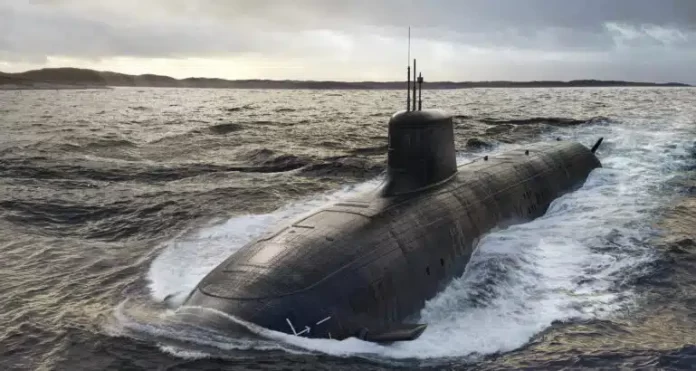
The AUKUS (Australia/UK/US) strategic partnering agreement will deliver significant benefits on top of the nuclear-powered attack submarine (SSN) capability the accord will provide in the first instance for the Royal Australian Navy (RAN) and the UK Royal Navy (RN), senior naval officers and government ministers told a RN conference in London, Navy News reports.
The AUKUS agreement was announced in September 2021, with its roadmap for delivering an SSN capability for the RAN and RN laid out in March 2023. The SSN capability will be provided by the SSN-AUKUS platform, a UK design concept that integrates US technology. The platform is now in the design phase, the RN’s First Sea Lord Admiral Sir Ben Key told the ‘First Sea Lord’s Sea Power Conference 2023’, held in partnership with the Council on Geostrategy and King’s College London, at Lancaster House in London on 16-17 May.
The trilateral partnership to deliver SSN-AUKUS is the foundation of what is known as ‘pillar 1’ within the agreement; this is a multi-decade process to develop, deliver, sustain, and maintain the SSN capability. However, ‘pillar 2’ will provide options to broaden the technologies and capabilities to be explored, and to broaden the range of partners involved. “Under ‘pillar 2’ … there will be opportunities for expanding those capabilities and including other countries,” Vice Admiral Martin Connell, the RN’s Second Sea Lord, confirmed.
US Navy Chief of Naval Operations (CNO) Admiral Michael Gilday, “When we talk about AUKUS, people typically are focused on the submarine – but there’s a whole second pillar of work on-going that is focused on [technologies like] quantum computing, artificial intelligence, and software development that’s going to be powerful for like-minded navies that are working together.”
“[The AUKUS] effort tends to break down barriers and brings us closer together.” This applies particularly to industry, CNO explained: “I look at AUKUS as an example of where we really need to go in terms of leveraging the defence industrial base of various countries together.”
While the primary focus of ‘pillar 1’ is standing up an SSN capability for the RAN to operate in the Indo-Pacific, AUKUS also provides operational capability on a global scale. “Together with the United States and Australia, we’re going to build a new, global, and interoperable SSN capability that will not only support a free and open Indo-Pacific but will also strengthen the UK contribution to NATO in Europe,” Anne-Marie Trevelyan, Minister of State for the Indo-Pacific at the UK Foreign, Commonwealth, and Development Office, told the conference.
The rationale for AUKUS, said Trevelyan, is “We need more submarine capability, providing deterrence in the only stealth environment remaining across [the] vast areas” of the Indo-Pacific maritime domain. AUKUS aims “to create an arc of defence and deterrence for the Indo-Pacific”, Trevelyan added. “If we don’t get our deterrence posture right, coercion could become aggression all too quickly.” Speakers stressed that AUKUS goes far beyond developing technology and delivering naval capability. “It is not just about capability – although capability plays a large part – but is about the strengthening and deepening of the relationship: it’s about sharing information; it’s about a common understanding; it’s about being interoperable; it’s about being like-minded,” said Rear Admiral Ed Ahlgren, the RN’s Commander Operations (COMOPS) and a former submariner.



